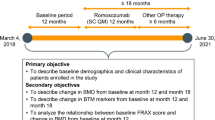Abstract
There is considerable advantage in developing tissue-specific delivery systems for therapeutic and diagnostic applications. Synthetic water-soluble polymeric delivery systems have been developed to allow selective delivery of therapeutic and imaging agents to musculoskeletal tissues. For mineralized tissues, bone-targeting agents such as aspartic acid octapeptide could concentrate the polymer conjugates to bone surfaces including resorption sites, which was demonstrated with routine bone histomorphometry. For bone-associated soft tissues, other targeting approaches based on pathophysiological properties unique to the local tissue environment, such as the leaky vasculature in arthritic joints, were utilized to achieve the selective deposition of the polymeric delivery systems to the desired sites. For this study, magnetic resonance imaging (MRI) was used to assess real-time pharmacokinetics and biodistribution of the MRI contrast agent conjugated polymer in major organs including skeletal tissues. The MRI data were then correlated with other standard imaging methods such as pQCT and DXA as well as routine histopathology and skeletal histomorphometry. Clearly, biopolymeric delivery systems may be used to improve the pharmacological and pharmacokinetic properties of different therapeutic agents for musculoskeletal diseases such as osteoporosis and arthritis. In addition, this or related technologies may also be useful to improve diagnosis and medical imaging with positron emission tomography, gamma scintigraphy, or other technologies.
Similar content being viewed by others
References
Kopeček J, Kopečková P, Minko T, Lu ZR (2000) HPMA copolymer-anticancer drug conjugates: design, activity, and mechanism of action. Eur J Pharm Biopharm 50: 61–81
Kozak KR, Crews BC, Ray JL, Tai HH, Morrow JD, Marnett LJ (2001) Metabolism of prostaglandin glycerol esters and prostaglandin ethanolamides in vitro and in vivo. J Biol Chem 276: 36993–36998
Orme MW, Labroo VM (1994) Synthesis of α-estradiol-3- benzoate-17-(succinyl-12a-tetracycline): a potential bone-seeking estrogen. Bioorg Med Chem Lett 4: 1375–1380
Wilson TM, Charifson PS, Baxter AD, Geddie NG (1996) Bonetargeted drugs. 1. Indentification of heterocycles with hydroxyapatite affinity. Bioorg Med Chem Lett 6: 1043–1046
Uludag H, Yang J (2002) Targeting systemically administered proteins to bone by bisphosphonate conjugation. Biotechnol Prog 18: 604–611
Kasugai S, Fujisawa R, Waki Y, Miyamoto K-I, Ohya K (2000) Selective drug delivery system to bone: small peptide (Asp)6 conjugation. J Bone Miner Res 15: 936–943
Seymour LW (1992) Passive tumor targeting of soluble macromolecules and drug conjugates. Crit Rev Ther Drug Carrier Syst 9: 135–187
Wang D, Miller SC, Sima M, Kopečková P, Kopeček J (2003) Synthesis and evaluation of water-soluble polymeric bone-targeted drug delivery systems. Bioconjug Chem 14: 853–859
Kopeček J, Bašilová H (1973) Poly(N-(2-hydroxypropyl) methacrylamide). I. Radical polymerization and copolymerization. Eur Polym J 9: 7–14
Wang D, Miller SC, Sima M, Parker D, Buswell H, Goodrich KC, Kopečkova P, Kopeček J (2004) The arthrotropism of macromolecules in adjuvant induced arthritis rat model: a preliminary study. Pharm Res 21: 1741–1749
Seymour LW, Duncan R, Strohalm J, Kopeček J (1987) Effect of molecular weight (MW) ofN-(2-hydroxypropyl)methacrylamide copolymers on body distribution and rate of excretion after subcutaneous, intraperitoneal, and intravenous administration to rats. J Biomed Mater Res 21: 1341–1358
Bendele AM (2001) Animal models of rheumatoid arthritis. J Musculoskel Neuron Interact 1: 377–385
Lecaille F, Choe Y, Brandt W, Li Z, Craik CS, Brömme D (2002) Selective inhibition of the collagenolytic activity of human cathepsin K by altering its S2 subsite specificity. Biochemistry 41: 8447–8454
Yokogawa K, Miya K, Sekido T, Higashi Y, Nomura M, Fujisawa R, Morito K, Masamune Y, Waki Y, Kasugai S, Miyamoto K-I (2001) Selective delivery of estradiol to bone by aspartic acid oligopeptide and its effects on ovariectomized mice. Endocrinology 142: 1228–1233
Gil L, Han Y, Opas EE, Rodan GA, Ruel R, Seedor JG, Tyler PC, Young RN (1999) Prostaglandin E2-bisphosphonate conjugates: potential agents for treatment of osteoporosis. Bioorg Med Chem 7: 901–919
Kushner I, Somerville JA (1971) Permeability of human synovial membrane to plasma proteins. Relationship to molecular size and inflammation. Arthritis Rheum 14: 560–570
Wallis WJ, Simkin PA, Nelp WB (1987) Protein traffic in human synovial effusion. Arthritis Rheum 30: 57–63
Shiah JG, Sun Y, Peterson CM, Straight RC, Kopecek J (2000) Antitumor activity ofN-(2-hydroxypropyl)methacrylamide copolymer-mesochlorin e6 and adriamycin conjugates in combination treatments. Clin Cancer Res 6: 1008–1015
Matsumura Y, Maeda H (1986) A new concept for macromolecular therapeutics in cancer chemotherapy: mechanism of tumoritropic accumulation of proteins and the antitumor agent smancs. Cancer Res 46: 6387–6392
Šprincl L, Exner J, Štěrba O, Kopeček J (1976) New types of synthetic infusion solutions. III. Elimination and retention of poly(N-(2-hydroxypropyl)methacrylamide) in a test organism. J Biomed Mater Res 10: 953–963
Říhová B, Kopeček J, Ulbrich K, Pospíšil J, Mančai P (1984) Effect of the chemical structure ofN-(2-hydroxypropyl)methacrylamide copolymers on their ability to induce antibody formation in inbred strains of mice. Biomaterials 5: 143–148
Vasey PA, Kaye SB, Morrison R, Twelves C, Wilson P, Duncan R Thomson AH, Murray LS, Hilditch TE, Murray T, Burtles S, Fraier D, Frigeiro E, Cassidy J (1999) Phase I clinical and pharmacokinetic study of PK1 (N-(2-hydroxypropyl)methacrylamide copolymer doxorubicin): first member of a new class of chemotherapeutic agents — drug-polymer conjugates. Clin Cancer Res 5: 83–94
Seymour LW, Ferry DR, Anderson D, Hesselwood S, Julyan PL, Poyner R, Doran J, Young AM, Burtless S, Kerr DJ (2002) Hepatic drug targeting: phase I evaluation of polymer-bound doxorubicin. J Clin Oncol 20: 1668–1676
Author information
Authors and Affiliations
Corresponding author
About this article
Cite this article
Miller, S.C., Wang, D., Kopečková, P. et al. Biopolymer-based delivery systems for advanced imaging and skeletal tissue-specific therapeutics. J Bone Miner Metab 23 (Suppl 1), 103–108 (2005). https://doi.org/10.1007/BF03026333
Issue Date:
DOI: https://doi.org/10.1007/BF03026333




